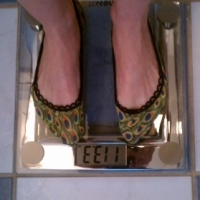Optimizing the Benefits of Garcinia Cambogia
 and Harry G. Preuss, MD
and Harry G. Preuss, MDGarcinia cambogia is no stranger to the pages of TotalHealth magazine—it was discussed in 2010 under the title, "Insulin, the Real Cause of Weight Gain."1 However, few researchers on Garcinia extracts were prepared for the soaring increase in popularity of this item and its active ingredient, (-)-hydroxycitric acid (HCA), sparked by its late 2012 featuring on the Dr. Oz TV Show. The subsequent demand for Garcinia products has been plagued by two major issues. First, the quality of many or even most of the products being sold is questionable. Based solely on the total HCA content in capsules and tablets judged in relation to label claims, recently Consumerlab.com found that among 11 Garcinia supplements selected for testing, only five contained their labeled amounts of HCA. If the nature of the stabilization is taken into account, a topic discussed below, the number of acceptable products is even lower. Last year, Harry Preuss, MD (Georgetown University Medical Center) and I initially addressed the issue of HCA quality in an essay hosted by the Alliance for Natural Health, parts of which are reproduced in the current article.2
A second issue that comes up constantly with the use of Garcinia cambogia extract for weight loss involves unrealistic hopes. Expectations tend to be mistaken in at least two areas. One is use of the product. The other involves probable benefits, including both the speed and the extent of weight loss. These matters, too, are addressed below.
What is Garcinia cambogia?
Garcinia extracts (also extracted from G. atroviridis, G. indica and other G. species) are traditional to India, in which they often are referred to as extracts of Malabar tamarind. Weight loss is a scientifically confirmed usage for this traditional flavoring component and foodstuff. Use of the Malabar tamarind in cooking in the western coastal cities of India and Sri Lanka has continued for centuries suggesting that safety should not be an issue, a point confirmed by numerous recent reviews. The fruit is used to create a sour, fruity tang in gravies. Interestingly, where Westerners use sweet fruits to flavor yogurt, Indians often will add a dollop of Malabar tamarind instead. Importantly, in addition to the fact that Malabar tamarind tastes great for these purposes, the fruit also makes food more satisfying, giving an early sense of having had enough to eat (satiety).Studies in the nineteen sixties and seventies showed that the rind of the Malabar tamarind contains a unique biochemical—hydroxycitric acid (HCA). Studied in well-established research laboratories, this biochemical was found to inhibit an enzyme called ATP-citrate lyase. In doing so, HCA blocks the conversion of ingested carbohydrates to fat in the body. The blocked carbohydrates are diverted into energy production and do not accumulate to be stored as fat. As a further benefit, fatty acids already in what scientists term the body's "fat pool" continue to be released and since they are not fully replaced, a shrinkage in the body's overall level of fat results. Studies performed with both animals and humans over the last decade have added yet another benefit, to wit, lower insulin levels leading, again, to reduced appetite and a greater ability to metabolize rather than store fat. In short, HCA yields two benefits prized by dieters: it increases the levels of satiety, thus making it easier to eat less, and it reduces the number of calories stored as fat.
Complications—Is Your HCA the Real Thing?
Above we mentioned the disappointing findings from Consumberlab.com that most of the HCA products tested did not match label claims. In fact, the challenges extend beyond matching the numbers in the Supplement Facts panel to include bioavailability, which usually is thought of only in terms of how much of a compound enters the blood for circulation throughout the body, but also can be thought of as involving a compounds cellular activity. The HCA in the Garcinia extract has to become bioavailable in order to be active. The state of availability is likely a major reason so many studies on this ingredient have resulted in divergent and contradictory outcomes.In order to be effective, this antiobesity agent must be handled properly—one must use the proper form of Garcinia (quality), use the proper dose (quantity), and use the proper timing and delivery mechanism for the dosing. Even many of the experts writing on Garcinia extract have failed to look at these requirements when assessing the results of research investigations. As an example of one of the complexities found with Garcinia products, the active component of Garcinia extract is HCA, but HCA takes two forms: free HCA which is active but tends to be unstable (the technical term is labile) and the more stable and much more absorbable, but almost entirely inactive form of HCA—HCA lactone. If not handled properly, the active form has a tendency to revert to the more stable but inactive form. The passage of time can encourage inactivation of Garcinia extract via lactone formation, especially if the powder is placed in fluid. While the manufacturers usually tell you how much HCA is present in their preparations, they seldom tell you how much is the inactive HCA lactone form. Similarly, few manufacturers warn that HCA tends to bind to foods and to most other dietary supplements if taken at the same time or within a short while of each other.
Converting the acid HCA to an HCA "salt" by adding a stabilizing alkaline material lessens lactone formation and also helps to prevent HCA from being bound to other items in the gut and then excreted. Therefore in the standard preparations, the free acid becomes a calcium (Ca), potassium (K) and/or magnesium (Mg) salt. These alkali and transition metals are used as counter ions to the HCA acid. Ca is the usual salt form, but, unfortunately, when the extract is entirely Ca, it is poorly bioavailable and requires extremely high doses to make it even somewhat effective. Some authorities do not want to see any calcium at all in HCA products because of associated bioavailability issues, albeit this position is a little extreme given in light of the clinical trials record.3
With Garcinia cambogia extracts as a rule of thumb (one borne out by our own experiments),4 potassium as a counter ion yields an HCA salt that is more bioavailable than is one based on magnesium, and magnesium yields an HCA salt that is more bioavailable than is one based on calcium. Moreover, greater physiologic activity is exhibited by stabilized extracts as the counter ions in HCA salts increasingly are limited to K and/or K plus Mg. Therefore, it is very important in judging the efficacy of a Garcinia extract to know the characteristics of the salt makeup. The point is worth repeating: the poorer the bioavailability, the greater the dose needed for efficacy so that under-dosing does not defeat the purpose of taking the supplement.
When considering dose amounts, one must also distinguish whether the quantity of Garcinia extract is under consideration refers to the amount of a salt or whether the free form of the acid is being discussed. For example, three grams of a calcium-potassium hydroxycitrate salt (often abbreviated as CaKHCA, although this is not the true chemical shorthand), if this is 60 percent hydroxycitric acid, yields 1,800 mg hydroxycitric acid as calculated in terms of the free acid equivalent. From laboratory findings in a successful study, the effective dose of a CaK hydroxcitrate (meaning the "salt" stabilized with calcium and potassium counter ions) containing 60 percent Garcinia extract is approximately 1.5 grams taken three times a day before meals. In terms of the pure or "free acid" HCA component of the salt, this works out to be a dose of about 0.9 grams taken three times a day before meals. (This amount can also be delivered as 2.25 grams of extract supplying the equivalent of 1.35 grams pure HCA taken twice per day.) Not many of the current ads for Garcinia extract recommend this much. Accordingly, greater success should be attained with proper dosing. Most, albeit not all, successful clinical trials have used on the order of 4.5 grams of a salt yielding 60 percent HCA per day. With higher purity material or more material based on potassium than calcium, the amount obviously might be reduced accordingly.
An important recommendation is to take the extract on an empty stomach. This is because in the presence of food, the hydroxycitrate salt can bind to some of the components in the meal and be inactivated. This is called the "food effect" and can seriously reduce the bioavailability of a number of supplements, not just HCA.
Finally, a word about the odd suggestion being put out on the Internet that one should not consume more than 3 grams of an HCA salt per day. This advice appears to be based on one Japanese animal study in which the animals were fed an HCA calcium salt that was extremely high in HCA lactone. The HCA free acid and lactone are powerful chelating agents that, in the study in question, which involved male rats, chelated available zinc from the system—a serious issue for rapidly growing male animals inasmuch as zinc is required for testicular development. No one has demonstrated any significant adverse effects from a fully reacted HCA salt, including at levels of intake many times greater than the equivalent of 3 grams per day. PubMed lists a half dozen recent safety reviews of HCA, including our own letter on the subject, and all of these reviews find Garcinia cambogia extracts / HCA to exhibit safety similar to that of citric acid, the acid found in oranges, other citrus fruits, and, indeed, in almost all fruits and berries.5
Realistic Weight Loss Expectations
Another challenge to dieters with HCA is unrealistic expectations. Most major clinical trials testing HCA for weight loss have run for eight weeks and, over the course of those two months have led to an average loss of around one pound per week. However, and this is very important, it must be kept in mind that the average of roughly nine to eleven pounds lost in the better-performing trials occurred preponderantly after the first two weeks. Even in a pilot study in which over the first two weeks there was a clear and significant reduction in food intake, there was no significant loss of weight over this period and the test subjects themselves were not aware of how much less food they were eating.In other words, weight loss is not normally noticeable during the first two weeks of usage and the appetite inhibition experienced with HCA is subtle and may not initially be perceived except for a reduced tendency to snack between meals and a reduced tendency to eat at bedtime. The clinical trials demonstrate that HCA, used appropriately, can lead to significant weight loss, yet not usually quickly and not usually with pronounced experiential qualities.
There are at least two reasons that HCA does not usually lead to weight loss during the first two weeks. One reason is better hydration and another is better replenishment of glycogen stores. First, as is known from animal experiments, HCA causes the body to more fully rehydrate, which is to say, to have sufficient moisture stored in the tissues. Aside from the benefits to health in general, better hydration is a boon to endurance athletes because being able to fully hydrate the tissues improves exercise performance. Second, it is well established that people who have been overweight or obese for a period of time, as is true generally of those suffering from the Metabolic Syndrome, have only small stores of glycogen in the liver and muscles compared to healthy lean counterparts. HCA ingestion may rapidly increase glycogen storage, again, something that has been demonstrated conclusively in animals and athletes with the ingestion of monovalent HCA salts (potassium and sodium counter ions are monovalent).
The upshot is that despite eating less food and also metabolizing more fat for energy, hence losing body fat, people often find that the initial effect of adding HCA to the diet is…nothing noticeable. The fat loss is counterbalanced initially by gains in weight from tissue hydration and from more glycogen in the liver and muscles. Instead of weight loss, changes in body shape are often the first signs that the HCA is working. The dress size goes down, the belt gets pulled in a notch, the muscles feel more "full" and pumped, recovery from exercise is faster, etc., even though the scale is not registering any changes.
Conclusions
Garcinia cambogia can be an effective "fat loser" for most individuals if a good extract is used properly. Notice, we stated "most individuals." Humans are biologically different and respond differently. Even the best of drugs are not 100 percent effective. Then too, humans being human do not always comply with directions, making any natural ingredient or drug less effective. To repeat, even a very effective agent, can appear ineffective if used improperly. We have a saying, "If you don't comply, don't complain."To summarize how to achieve the best results with a Garcinia cambogia extract.
References
- Choose a preparation that is at a minimum 50 percent HCA and is not composed wholly of calcium salts: make sure potassium and/or magnesium is present. If the product is 60 percent or more HCA and has a low lactone content, that is even better.
- Be sure to take an adequate dose with plenty of water. For a CaK preparation used successfully and reported in a peer-reviewed publication, the dose was near 1.5 grams of the salt taken three times a day before meals. With a 60 percent HCA preparation, that approximates 0.9 grams of HCA prior to each meal. A very pure potassium or potassium-magnesium HCA salt likely will be effective at a significantly lower level of intake because more bioavailable.
- Take the product on an empty stomach, i.e., 30-60 minutes, before meals. Food dramatically reduces the bioavailability of HCA.
- Do not expect to experience either significant weight loss or powerful appetite suppression over the first two weeks. HCA's impact on appetite is significant, yet subtle and its impact on body weight is significant over an eight-week period, but seldom over the initial two weeks of ingestion. The mirror, in this case, is more instructive than is the scale.
- Remember, "If you don't comply, don't complain." Take the right dose at the right time.
- http://totalhealthmagazine.com/articles/weight-loss/insulin-the-real-cause-of-weight-gaindiscovering-assam-gelugur.html
- Garcinia cambogia: How to Optimize Effects found at http://www.anh-usa.org/wpcontent/uploads/2013/05/garcinia-cambogia2.pdf
- Greenway, Frank. "Garcinia," in the Encyclopedia of Dietary Supplements. (Second edition, 2010)
- Clouatre D, Preuss HG. Potassium Magnesium Hydroxycitrate at Physiologic Levels Influences Various Metabolic Parameters and Inflammation in Rats. Current Topics in Nutraceutical Research 2008;6(4): 201-10.
- Clouatre DL, Preuss HG. Hydroxycitric acid does not promote inflammation or liver toxicity. World J Gastroenterol. 2013 Nov 28;19(44):8160-2.
-
Weight Loss Diet Pills Will Give You Quick Results for Shedding the Pounds
Are you looking for effective weight loss diet pills? If so, then you
-
What Is Acaislim? Earn A $1000 With Your Story Find Out More Here,
What Is Acaislim? Earn a $1000 with Your Story Before I tell you more
-
P90X acid address complete accurate absolute exercise complete accurate absolute exercise
P90X acid address complete accurate absolute exercise complete accu
-
Proper Diet can Help You Reduce Weight
-
Ten Realistic Ways to Lose Weight Safely
Dieting shouldnt just be something that you do for a short-time to los
-
Do Fast Weight Loss Diets Really Work?
We are all looking for fast weight loss diets as a way to s
- DON'T MISS
- Deciding about Medical Weight Loss
- Cheat Your Way Thin Torrent
- Get Slim For Your Vacation - 6 Ultra Simple Techniques For Summer Diet Success
- Experience the Effects in just 10 Days with Lyriana
- Eat Stop Eat Diet
- Lose 18 Lbs in 3 Weeks - The Most Effective Dieting Technique to Drop 18 Lbs Lightning Fast!
- Weight Loss Motivation: How To Lose Weight With The Right Mindset
- 6 hot tips on how to lose weight after pregnancy
- How to Get Rid Of the Belly and Waist Fat Permanently With Quickweightlosslover
- Knight Sticks Cigarettes - Ecigs Free trial




